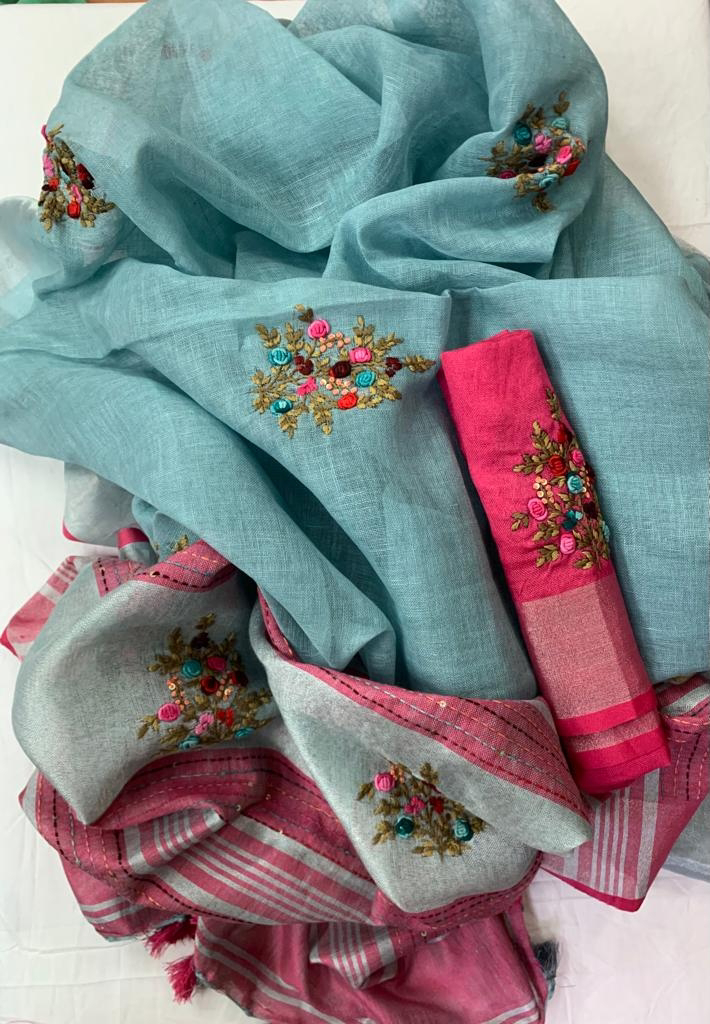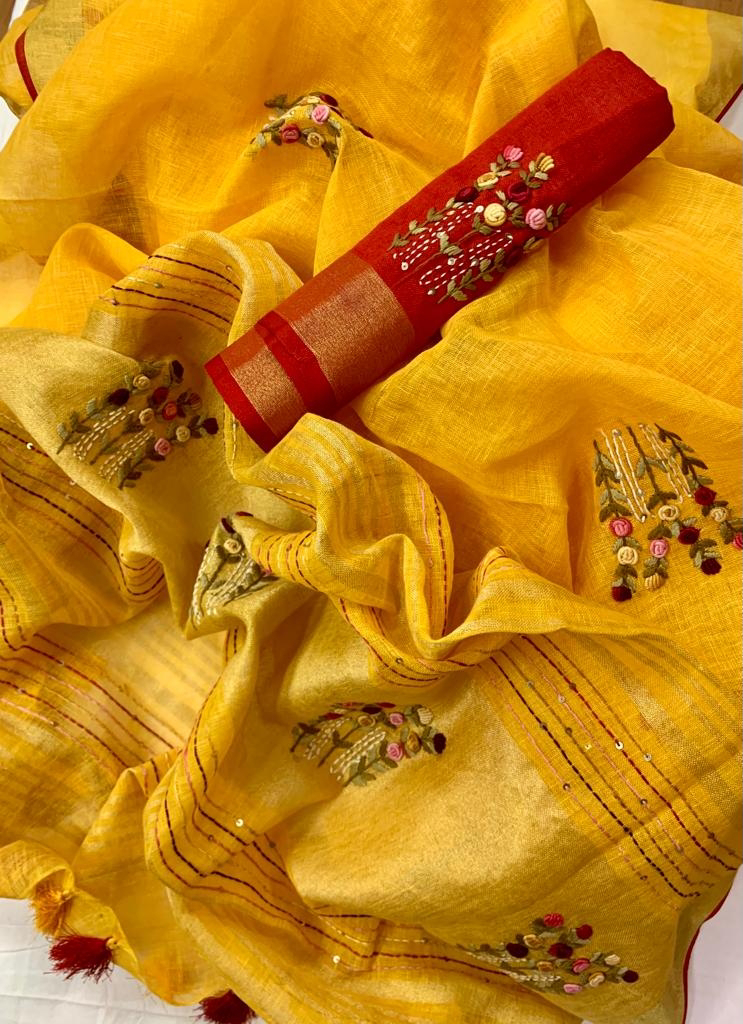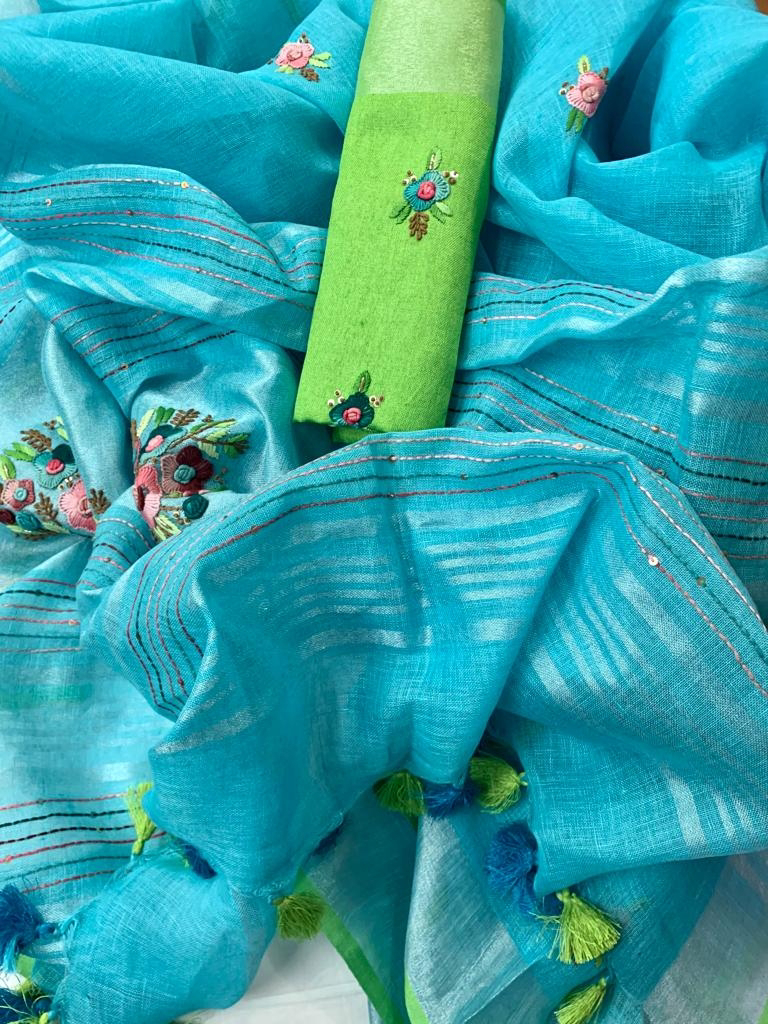Linen is a natural fabric that is lightweight, breathable, and perfect for warm weather. It is also known for its durability and strength, making it an ideal choice among sarees. Unlike other fabrics, this is one that remains effortlessly unruffled even after a long day's wear. We may safely call it a dawn-to-dusk saree. Dancing Looms brings you handwoven linen sarees in many colours and design choices.
Today, we are talking about linen sarees with French embroidery: a beautiful and luxurious addition to any wardrobe.
French embroidery is a style of embroidery that originated in France and is known for its intricate designs and attention to detail. It is often used to embellish high-end fashion pieces, and when combined with handwoven linen sarees, it creates a stunning and unique look.
The process of creating a handwoven linen saree with French embroidery is a time-consuming one, but the end result is well worth the effort. The linen fabric is handwoven on a traditional loom, with each saree taking several days to complete. The embroidery is then handcrafted by skilled artisans, using thread and needles to create intricate designs on the saree.
The beauty of a handwoven linen saree with French embroidery lies in its attention to detail. Each saree is unique, with its own combination of colors, patterns, and designs. The embroidery adds a touch of elegance and sophistication to the saree, making it a perfect choice for special occasions.
In addition to its beauty, a handwoven linen saree with French embroidery is also a sustainable choice. Linen is a natural fabric that is biodegradable and requires less water and energy to produce than other fabrics like cotton or polyester. Additionally, handcrafted embroidery supports local artisans and their traditional crafts, preserving cultural heritage and promoting ethical fashion.
A handwoven linen saree with French embroidery is a beautiful and sustainable choice for anyone looking for a unique and luxurious addition to their wardrobe.
Let us know in the comments if you like any of the colours here. We have many more.












Linen sarees with French embroidery sound so elegant and comfortable! For a more traditional yet equally stunning option, a Kanjivaram silk saree offers rich heritage, vibrant colors, and timeless beauty for special occasions.
ReplyDelete